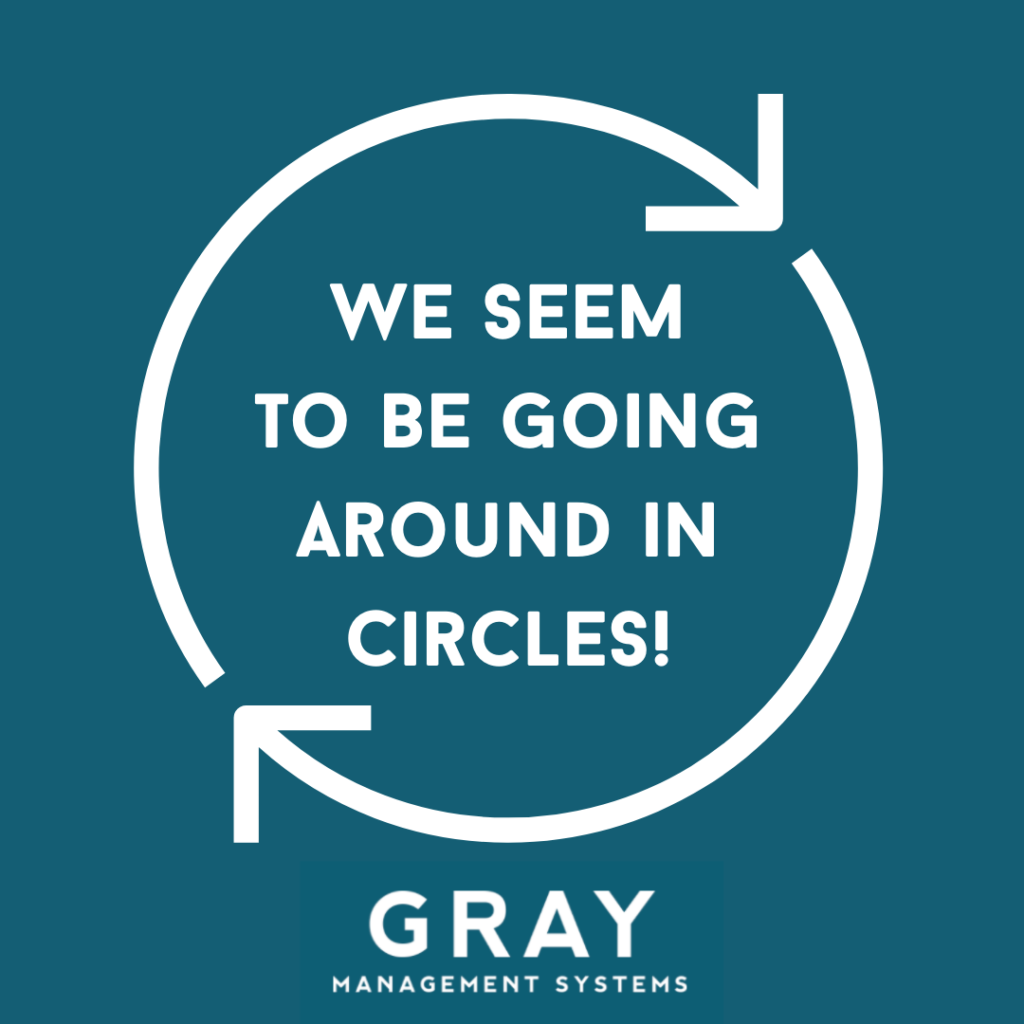Steve Robinson from Rightstrategy is an educator at Gray Management Systems delivering a variety of accredited training courses including, Manage Business Risk, Facilitate Continuous Improvement, Manage Project Quality and Manage People Performance. Steve is our resident risk guru and strategy expert.
One of our valued training clients recently had a gap analysis conducted by an Industry Consultant against the Aged Care Quality Standards.
Amongst other things the Consultant’s advice was that the client was required to have an ‘Improvement Register’.
The client in an attempt to do the right thing set about establishing an Improvement Register within their organisation. This created a lot of confusion within the organisation as to how many registers were needed.
They contacted us in somewhat of a perplexed state and said that we seem to be going around in circles and can’t make a decision on how we can satisfy the requirement.
To be clear the standard does not specifically mention a requirement for any registers, however, it does require the organisation to be able to demonstrate evidence of continuous improvement across the organisation and its services, and a plan to improve the quality and safety of care services.
Oh, and by the way, continuous improvement means to continue without interruption and should be directly and consistently applied to the processes that support an organisation’s products and/or services.
Upon closer investigation we learned a couple of things about this organisations systems. One was that that they already had a ‘Corrective Action Register’. The other was that they did not appear to have a Risk Register in place.
Improvement and risk are two different things, but they are connected. Risk is concerned with anticipating what might go wrong. Improvement systems should be focussed on reacting to quality and safety concerns as well as more proactive forms of improvement.
Risk management should establish planned controls to prevent or mitigate unwanted quality and safety concerns. Should these risk controls be inadequate, it may lead to a quality or safety failure that will require improvement. If this actually occurred it would be necessary to review and possibly update the Risk Register to reflect any change in the risk status.
So anyway, let’s get back to the Corrective Action Register. Although the clients Corrective Register was largely centred on reactive improvement it was in fact an ‘Improvement Register’. It was actually being used to improve consumer quality and safety concerns that had been identified.
It could also be used to capture proactive improvements. Such proactive improvements could come from more strategic means, such as focus groups, or employee suggestions which feed into the Corrective Action Register.
Now, I understand that some organisations may want to separate the two forms of improvement, however, a well-designed spreadsheet or database would easily achieve this objective. Doing so would negate an unnecessary proliferation and duplication of systems, unnecessary administrative burden and should make it easier for the organisation.
So, the moral of the story is keep it simple and effective!

